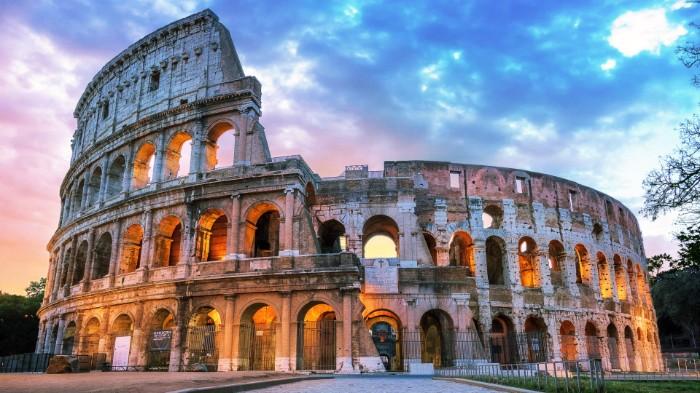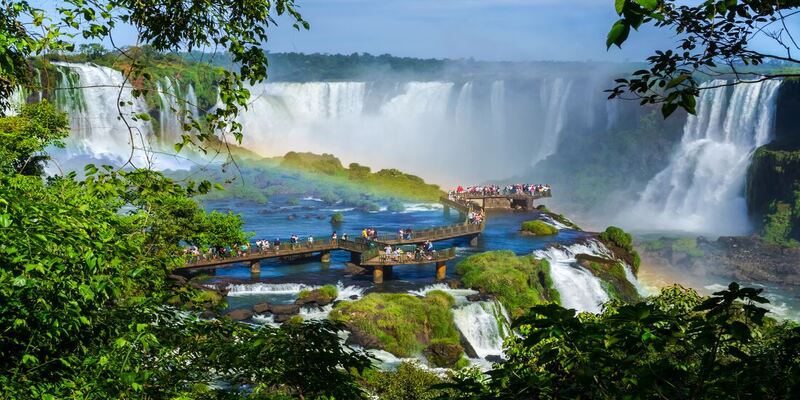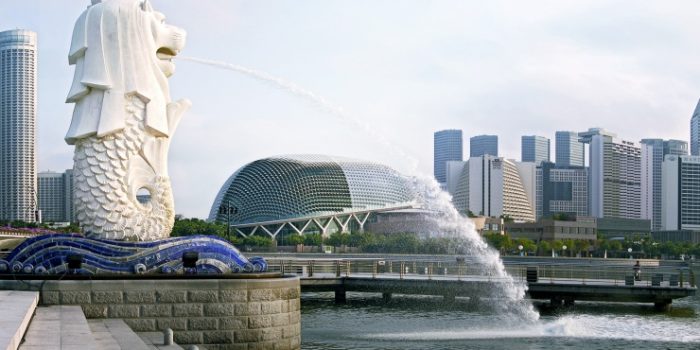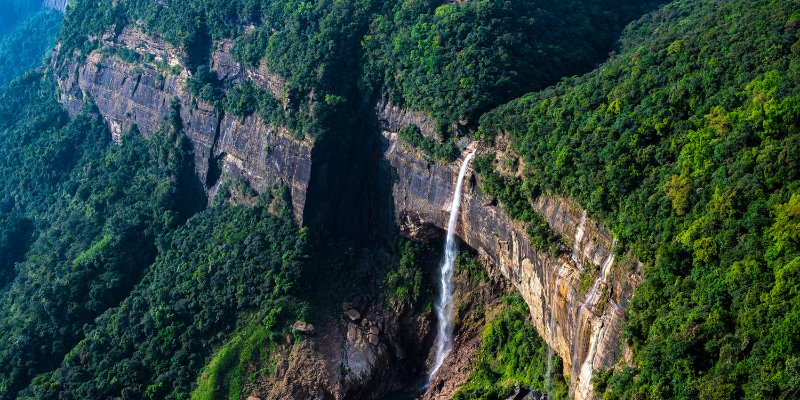We've all dreamed of seeing the world's wonders—from exploring the depths of the Great Barrier Reef to standing in awe beneath the immense Egyptian pyramids. But these days, some impressive artificial pieces also have a spot on many top travel lists.
From incredible architectural feats to engineering marvels, human ingenuity has crafted sculptures and structures that match any natural wonder for their beauty and intrigue.
In this blog post, we'll look at 10 of these extraordinary artificial wonders around the globe that will pique your interest or inspire you to add them to your bucket list.
The Great Wall of China
An iconic man-made marvel, the Great Wall of China spans more than 13,000 kilometres across northern China. It was a defensive structure against attacks from nearby tribes and armies, built over several centuries.
The wall's numerous sections, turrets and watchtowers display amazing engineering and building methods. It is a symbol of Chinese pride and a tribute to the country's rich history and culture.
Today, the Great Wall attracts millions of visitors who marvel at its grandeur and panoramic views. Efforts are being made to preserve and protect this UNESCO World Heritage Site, ensuring its legacy for future generations.
Petra
Nestled in the rugged mountains of Jordan, Petra is an extraordinary archaeological site and one of the World's New Seven Wonders. This ancient city is carved into rose-coloured cliffs, showcasing remarkable rock-cut architecture and intricate facades.
Once a bustling Nabatean trading hub, Petra flourished from the 1st century BC to the 2nd century AD. The most famous structure is Al-Khazneh (The Treasury), whose elaborate façade astonishes visitors.
Exploring the narrow Siq (canyon) and discovering ancient tombs, temples, and theatres is a mesmerising experience. Preservation efforts are in place to safeguard this cultural treasure, ensuring its historical significance and enchanting beauty continue to captivate visitors from around the globe.
Taj Mahal

Located in Agra, India, the Taj Mahal is a magnificent symbol of love and a UNESCO World Heritage Site. It is a mausoleum dedicated to Emperor Shah Jahan's cherished wife, Mumtaz Mahal, and was constructed in the 17th century.
The Taj Mahal is well known for its magnificent Mughal architecture, symmetrical layout, and fine marble craftsmanship set off by semi-precious stones. Its recognisable white marble dome, reflecting pools, and lovely grounds produce a tranquil and enchanting atmosphere.
The Taj Mahal is not only a symbol of eternal love but also a masterpiece that represents the rich cultural heritage of India. It continues to draw millions of visitors enchanted by its timeless beauty and architectural grandeur.
Machu Picchu
Perched high in the Andes Mountains of Peru, Machu Picchu is a mesmerising ancient Incan citadel. Built-in the 15th century, it remained hidden and unknown to the outside world until its rediscovery in 1911 by Hiram Bingham.
This architectural marvel showcases the impressive stonework and engineering skills of the Incan civilisation. Its terraced fields, temples, and intricate stone structures blend harmoniously with the mountains and lush landscapes. Machu Picchu is not only a testament to the advanced knowledge and craftsmanship of the Incas but also a spiritual and cultural site that offers a glimpse into their mysterious past.
Today, it attracts visitors from across the globe, who marvel at its breathtaking beauty and explore its enigmatic ruins, making it one of the world's most iconic and captivating destinations.
The Panama Canal
The Panama Canal is a monumental feat of engineering that connects the Atlantic and Pacific Oceans through the Isthmus of Panama. Completed in 1914, it revolutionised global maritime trade by providing a shortcut for ships, eliminating the need for long and treacherous voyages around Cape Horn.
The canal's locks system allows vessels to navigate through a series of water-filled chambers, raising or lowering them to the level of the adjacent water bodies. This artificial wonder not only transformed international shipping and commerce but also significantly impacted geopolitics and global trade routes.
The Panama Canal is a testament to human ingenuity, facilitating efficient and economical maritime transportation while showcasing the harmonious integration of technology and nature.
The Eiffel Tower
Rising majestically above the Parisian skyline, the Eiffel Tower is an iconic symbol of France and one of the most recognised artificial structures in the world.
Designed by Gustave Eiffel and completed in 1889, it was initially met with mixed reactions but has become a global cultural icon. Standing at 324 meters (1,063 feet) tall, the tower was the tallest artificial structure of its time.
It's intricate lattice ironwork and elegant design exemplify the architectural and engineering achievements of the Industrial Revolution.
The Eiffel Tower offers stunning panoramic views of Paris from its observation decks and has become an enduring symbol of romance, art, and innovation.
It attracts millions of visitors annually, captivated by its beauty, charm, and the mesmerising experience of ascending its iron steps or elevators to enjoy breathtaking vistas of the City of Light.
The Colosseum

The Colosseum, located in the heart of Rome, Italy, is an awe-inspiring ancient amphitheatre that stands as a testament to the grandeur and architectural brilliance of the Roman Empire. Completed in 80 AD, it was the largest theatre of its time and could hold up to 50,000 spectators.
The Colosseum was primarily used for gladiatorial contests, public spectacles, and other forms of entertainment. Its elliptical shape, impressive stone façade, and intricate arches and corridors make it a remarkable engineering marvel.
The Colosseum is still a UNESCO World Heritage Site and a well-known image of ancient Rome despite centuries of deterioration and devastation.
Millions of people visit it every year to explore its maze-like passageways, be in awe of its towering remains, and learn about the deep cultural significance of this lasting emblem of Roman civilization.
FAQs
What is the Great Wall of China?
The Great Wall of China is an artificial wonder that stretches over 13,000 miles across northern China. It was built as a defensive structure during ancient times to protect the Chinese empire from invasions.
What is the oldest artificial wonder of the world?
The Colosseum in Rome, Italy, is considered the oldest artificial wonder of the world. It was built in 80 AD and could seat up to 50,000 spectators for its impressive shows and gladiatorial contests. It remains a UNESCO World Heritage Site today.
What is Machu Picchu?
In the Andes Mountains of Peru, there is a historic Incan stronghold called Machu Picchu. It was initially constructed in the 15th century, then abandoned, before being found by Hiram Bingham in 1911. It is now a UNESCO World Heritage Site and a well-liked vacation spot noted for its spectacular mountain views and enigmatic ruins.
Conclusion
We have explored some of the most amazing artificial wonders in the world. Each has a unique story and unique beauty. To this day, visitors are still captivated by these sites' immense scale and detail.
While we may have only scratched the surface here, it is clear that there are many more wonderful architectural feats for us to discover around this wonderful planet we call home.




